Filter by
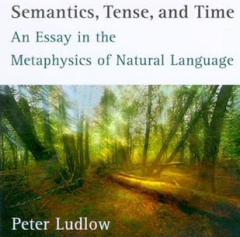
Semantics, Tense, and Time; An Essay in the Metaphysics of Natural Language
Menurut Peter Ludlow, ada hubungan yang sangat erat antara struktur bahasa alami dan realitas, dan seseorang dapat memperoleh wawasan tentang pertanyaan metafisik yang sudah lama ada dengan mempelajari semantik bahasa alami. Dalam buku ini Ludlow menggunakan metafisika waktu sebagai studi kasus dan berfokus pada perselisihan antara ahli teori A dan ahli teori B tentang hakikat waktu. Menurut ah…
- Edition
- -
- ISBN/ISSN
- 9780262278621
- Collation
- 1 online resource (x, 508 pages) :
- Series Title
- Semantics
- Call Number
- 401.43 LUD s
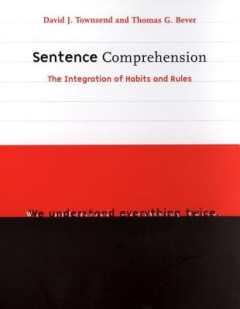
Sentence Comprehension; The Integration of Habits and Rules
Dengan menggunakan pemahaman kalimat sebagai studi kasus untuk semua ilmu kognitif, David Townsend dan Thomas Bever menawarkan integrasi dua pendekatan utama, yaitu komputasional-simbolis dan koneksionis-asosiatif. Pendekatan komputasional-simbolis menekankan manipulasi formal simbol yang mendasari aspek kreatif perilaku bahasa. Pendekatan koneksionis-asosiatif menangkap intuisi bahwa sebagian …
- Edition
- -
- ISBN/ISSN
- 9780262316156
- Collation
- 1 online resource (x, 445 pages)
- Series Title
- Comprehension.
- Call Number
- 401.43 TOW s
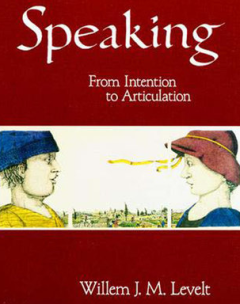
Speaking; From Intention to Articulation
Dalam Speaking, Willem "Pim" Levelt, Direktur Max-Planck-Institut für Psycholinguistik, berhasil menyelesaikan tugas berat dalam meliput seluruh proses produksi ujaran, mulai dari kendala pada kesesuaian percakapan hingga artikulasi dan pemantauan diri terhadap ujaran. Speaking unik karena cakupannya yang seimbang terhadap semua aspek utama produksi ujaran, dalam kelengkapan penanganannya terh…
- Edition
- -
- ISBN/ISSN
- 9780262278225
- Collation
- 1 online resource (xiv, 566 pages)
- Series Title
- Psycholinguistics
- Call Number
- 401.9 LEV s

The Sketch Book of Geoffrey Crayon, Gent.
- Edition
- -
- ISBN/ISSN
- 2294558464
- Collation
- -
- Series Title
- -
- Call Number
- 4997
- Edition
- -
- ISBN/ISSN
- 2294558464
- Collation
- -
- Series Title
- -
- Call Number
- 4997
The generative lexicon
The Generative Lexicon presents a novel and exciting theory of lexical semantics that addresses the problem of the "multiplicity of word meaning"; that is, how we are able to give an infinite number of senses to words with finite means. The first formally elaborated theory of a generative approach to word meaning, it lays the foundation for an implemented computational treatment of word meaning…
- Edition
- -
- ISBN/ISSN
- 9780262281966
- Collation
- 1 online resource (xii, 298 pages).
- Series Title
- -
- Call Number
- 400 PUS g
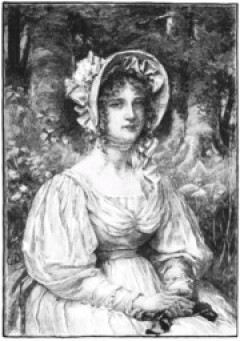
Felix Holt, the radical
Fathers and daughters -- Fiction, Love stories, PR, Legal stories, Radicals -- Fiction, Political fiction, Elections -- Fiction, England -- Fiction, Domestic fiction, Triangles (Interpersonal relations) -- Fiction
- Edition
- -
- ISBN/ISSN
- 24507759
- Collation
- 2 v. : 21 cm
- Series Title
- 1
- Call Number
- 40882

Our English bible : its translations and translators
- Edition
- -
- ISBN/ISSN
- -
- Collation
- [1] leaf of plate, vi, 310 p. :
- Series Title
- -
- Call Number
- 400 STO o
- Edition
- -
- ISBN/ISSN
- -
- Collation
- [1] leaf of plate, vi, 310 p. :
- Series Title
- -
- Call Number
- 400 STO o
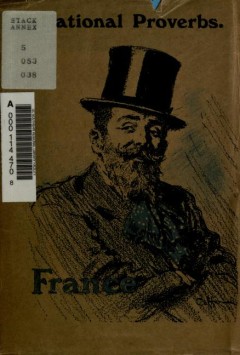
National proverbs : France
- Edition
- -
- ISBN/ISSN
- -
- Collation
- 91 p,Text in English and French
- Series Title
- -
- Call Number
- 400 NAT
- Edition
- -
- ISBN/ISSN
- -
- Collation
- 91 p,Text in English and French
- Series Title
- -
- Call Number
- 400 NAT
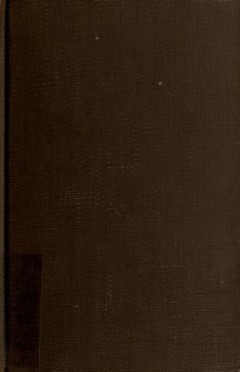
New etymological French grammar giving for the first time : the history of th…
- Edition
- -
- ISBN/ISSN
- -
- Collation
- 522 p. 17 cm
- Series Title
- -
- Call Number
- 445 CHA n
- Edition
- -
- ISBN/ISSN
- -
- Collation
- 522 p. 17 cm
- Series Title
- -
- Call Number
- 445 CHA n

 Computer Science, Information & General Works
Computer Science, Information & General Works  Philosophy & Psychology
Philosophy & Psychology  Religion
Religion  Social Sciences
Social Sciences  Language
Language  Pure Science
Pure Science  Applied Sciences
Applied Sciences  Art & Recreation
Art & Recreation  Literature
Literature  History & Geography
History & Geography